 I recently updated an article for Campus Safety Magazine, and I am sharing some updated statistics and sources with you in today’s post. The article addresses some of the unintended consequences that could occur if classroom barricade devices are used as a retrofit security measure, and the products’ impact on fire safety, emergency response, unauthorized use, accessibility, and potential liability.
I recently updated an article for Campus Safety Magazine, and I am sharing some updated statistics and sources with you in today’s post. The article addresses some of the unintended consequences that could occur if classroom barricade devices are used as a retrofit security measure, and the products’ impact on fire safety, emergency response, unauthorized use, accessibility, and potential liability.
I’d like to focus on three statistics related to school security and safety, as I have seen cases where facilities are trying to address the possibility of an active shooting and have overlooked other hazards in the process. I’ve written about these at length before, and you can read more in the updated Campus Safety article, so here the brief summaries:
- Fires in Educational Facilities: Some proponents of classroom barricade devices have argued that security should be prioritized over fire safety because fires rarely occur in schools. In reality, the National Fire Protection Association (NFPA) reports that between 2018 and 2022, an average of 3,768 structure fires occurred each year in U.S. educational facilities. Because of strong code requirements and proactive enforcement, fatalities in these fires are extremely rare. However, without the codes protecting the life safety of building occupants, it’s likely the high-fatality school fires of the past would reoccur.
- School Crime and Nonfatal Victimization: The practice of storing a barricade device next to a classroom door could allow an unauthorized person to deploy it, effectively trapping occupants in a room against their will. The risk of school crime should not be underestimated. According to the National Center for Education Statistics, in 2022, students ages 12–18 experienced about 568,100 criminal victimizations at school, including thefts and nonfatal violent victimizations (the latter includes rape, sexual assault, robbery, aggravated assault, and simple assault). While school shootings are a very serious threat, they are not nearly as common as other types of crimes that occur in schools. It’s crucial for school staff and emergency responders to be able enter a room quickly to render aid.
- Active Shooter Events: In comparison with the statistics above, active shooter events in educational facilities are relatively rare. According to the FBI report: Active Shooter Incidents in the United States in 2023, there were a total of 48 incidents in 2023 that met the definition of an active shooter event. Of those 48 active shooter events, three occurred in educational facilities: Michigan State University (three fatalities, five injuries), Covenant Presbyterian School in Nashville (six fatalities, one injury), and University of Nevada, Las Vegas (three fatalities, one injury).
Of course, every school shooting is a tragedy, and there are important steps to be taken to help ensure that schools and classrooms are protected against unwanted entry. But the security of these buildings must be improved in a way that will not negatively affect fire protection, accessibility, response by staff and emergency responders, nor increase the liability of school districts, colleges, and universities.
Click here to read the article on Campus Safety’s website.
For FBI statics on previous years, you can access the annual reports here.
You need to login or register to bookmark/favorite this content.

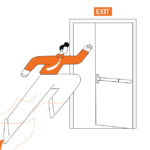
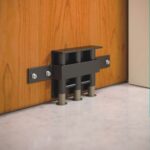


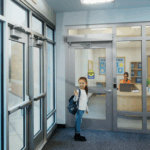

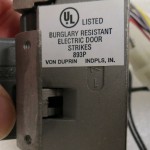
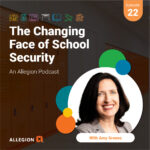
Very interesting, but your average classroom function security latch can act as a barricade as well. Anyone can engage the thumb turn, barricading the door. The keys are not always accessible to first responders. Take the Marjory Stoneman Douglas Broward County Florida mass shooting for instance. I believe the keys were not available. First responders breached classroom doors by breaking the windows and reaching in and turning the latches. All well designed door barricade devises also have a key or other credential for first responders to disengage them.
You once wrote, that you would use any means available if you found yourself sheltering in place in an active shooter situation, I don’t remember your exact words. You say “most door barricade devises” are dangerous. You can’t call them out by name for obvious reasons, but you should give the good ones a little love sometimes. Some Door barricade devices have saved lives. They are here to stay, as an estimated 30,000 school districts are trusting door barricades in one form or another.
It’s probably just a matter of time before the major hardware companies release their own version of temporary door locking mechanisms. They must be in development Then, I’m sure you will see their benefits.
Hi Joe –
I’d like to address a few of the statements made in your comment.
JT: Very interesting, but your average classroom function security latch can act as a barricade as well. Anyone can engage the thumb turn, barricading the door.
LG: Classroom function locks and classroom security function locks do not have thumbturns. On a lockset that IS equipped with a thumbturn, someone could use that thumbturn to lock the door from the inside, but this does not barricade the door or affect egress. In addition, Schlage offers a key override safety feature that will allow key access from the outside (as required by code) even if someone is holding the thumbturn in the locked position. You can check it out here: https://youtu.be/juc1YBWuOh0?si=FiUxYCAP1Z5LnX5a
JT: The keys are not always accessible to first responders. Take the Marjory Stoneman Douglas Broward County Florida mass shooting for instance. I believe the keys were not available. First responders breached classroom doors by breaking the windows and reaching in and turning the latches. All well designed door barricade devises also have a key or other credential for first responders to disengage them.
LG: The availability of keys is an important part of each facility’s security plan. If first responders do not have access to keys, how do they have access to the tool required to remove a barricade device?
JT: You once wrote, that you would use any means available if you found yourself sheltering in place in an active shooter situation, I don’t remember your exact words.
LG: Locked classroom doors have provided an effective level of security in multiple school shootings. If someday I find myself sheltering in place during an active shooter situation, I hope that I will be sheltering behind a locked door that does not require me to install a separate gadget that could deter or prevent evacuation.
JT: You say “most door barricade devises” are dangerous. You can’t call them out by name for obvious reasons, but you should give the good ones a little love sometimes.
LG: I think you’ve misunderstood me. I’m not fighting against a particular product. I’m advocating for code-compliant security. If a lock is code-compliant and reliable, I’m a fan. But I will never “give a little love” to a product that does not meet the requirements of the model codes and accessibility standards.
JT: Some Door barricade devices have saved lives.
LG: Please share reputable sources for this information. Here are a couple of articles about a) the shooting at Oxford High School (https://idighardware.com/2023/11/campus-safety-update-on-barricade-devices/) and b) barricade devices used to purposely prevent egress at the Capital Gazette (https://idighardware.com/2024/08/barricade-devices-unintended-consequences/).
JT: They are here to stay, as an estimated 30,000 school districts are trusting door barricades in one form or another.
LG: I disagree, and there are thousands of school districts that rely on code-compliant security.
JT: It’s probably just a matter of time before the major hardware companies release their own version of temporary door locking mechanisms. They must be in development Then, I’m sure you will see their benefits.
LG: I promise you, I will never see the benefits of security that is not code-compliant.
– Lori
Let me echo Lori’s statements.
1. I have seen claims, but never an actual article or reference that a non-code-compliant barricade device has saved lives.
2. Anything that can trap a person in a classroom is a great potential liability for humans(personally) and school districts (financially).
3. I am not aware of a single lock manufacturer contemplating producing a non-conpliant barricade device. Why would they? Several produce 100% compliant devices.
4. Keys on a key chain open doors, not special tools stored in the principal’s office.
Code compliance is a religion. We have seen that it saves lives and many people dedicate their professional activities to increasing code compliance across the USA and Canada, not asking for variances that put people in harm’s way.